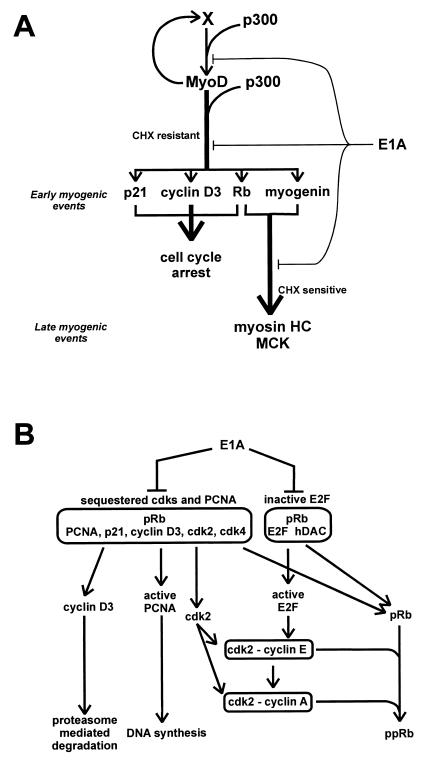FIG. 10.
(A) Schematic model of the multistep process of terminal differentiation. MyoD directly activates its own transcription and that of early differentiation genes through a mechanism that is cycloheximide (CHX) resistant and requires p300. Induction of late differentiation genes is CHX sensitive and requires pRb and myogenin. pRb, p21, and cyclin D3 contribute to cell cycle arrest of differentiating myoblasts. E1A, by targeting both p300 and pRb, interferes with the early and the late steps of muscle differentiation. (B) Schematic model of the E1A-mediated reinduction of DNA synthesis in terminally differentiated myotubes. pRb sequesters cyclin D3 along with inactive cdk’s and PCNA; pRb binds E2F and recruits histone deacetylase (hDAC) to E2F. E1A, by binding the pRb pocket, inhibits the binding of E2F and cyclin D3 to pRb. Consequently, active E2F induces S-phase genes, and cyclin D3 is degraded; active cdk’s and PCNA contribute to S-phase entry.

